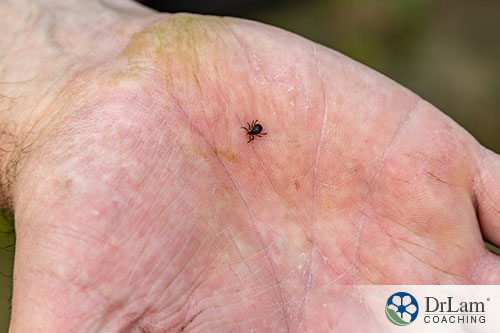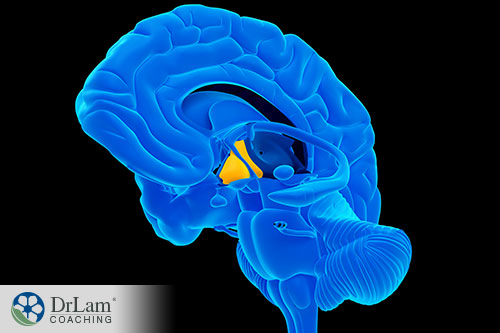 The U.S. military originally developed the visual contrast sensitivity test as part of the evaluation protocol for fighter pilots. It measures the ability to see details at varying contrast levels of gray. Research has since found that it also works as a nonspecific test of neurological immune function. Also, further research discovered that it possesses a high potential for accuracy and sensitivity in detecting possible biotoxin exposure. Let's discuss this test in more detail.
The U.S. military originally developed the visual contrast sensitivity test as part of the evaluation protocol for fighter pilots. It measures the ability to see details at varying contrast levels of gray. Research has since found that it also works as a nonspecific test of neurological immune function. Also, further research discovered that it possesses a high potential for accuracy and sensitivity in detecting possible biotoxin exposure. Let's discuss this test in more detail.
The visual contrast sensitivity test consists of a series of images in which the contrast decreases with each image. You choose whether the lines in the images point to the left, up, or right. You can choose a response indicating you can’t see an image. A total of 45 images make up the test. Total testing time requires 10 to 15 minutes. And all you need is a computer. The test measures the contrast sensitivity of each eye. You either shut or cover the other eye while testing one.
Instructions for the visual contrast sensitivity test appear complex at first reading. The wording of the instructions requires close reading and attention to detail. The instructions could be easier to follow if different wording and a different format were used.
The visual contrast sensitivity test doesn’t diagnose any condition. However, a positive result indicates the possible presence of hidden health risks due to biotoxin exposure or as a result of nutritional deficiencies. Also, a positive result indicates the need for further evaluation to pinpoint any exact cause.
Due to the nonspecific nature of the visual contrast sensitivity test, any condition that affects your perception of contrast can lead to a positive result. Some of those conditions include the following.
As mentioned above, the instructions for the test appear complex. Similarly, the instructions on how to interpret your results appear complex. Two figures contain small colored circles, green for correct choices, red for incorrect, in five columns in each figure.
Also, a gray line across the series of columns shows what research reveals as the average healthy individual’s scores. A red line reveals your scores or the highest contrast sensitivity image you correctly identify at each frequency. The higher the contrast score the better. To clarify, you want your red line to be at or above the gray line.
The columns carry the labels A, B, C, D, and E for each figure. Research shows three or more marked wrong out of nine in columns A or B suggests a nutritional deficiency. Likewise, if more than three of nine in column C and more than four of nine in column D are marked wrong, exposure to some biotoxin may exist.
 If you score positive and fit the criteria for possible biotoxin exposure, some of the toxins you may consider include:
If you score positive and fit the criteria for possible biotoxin exposure, some of the toxins you may consider include:
If you score positive and fit the criteria for nutritional deficits, you may consider the following.
If column E on your figures falls into the positive range, acute exposure to heavy metals or other toxins should come under consideration.
Many experts estimate up to one-fourth of homes and maybe one-half of the schools in the U.S. contain mold. If you add in buildings where people work and shop, those estimates increase significantly. Therefore, your exposure to this potentially dangerous substance increases as well. The visual contrast sensitivity test provides you with sufficient information regarding potential exposure to warrant a visit to your healthcare professional if the results come back as positive.
Why should you wonder about your exposure to mold as a biotoxin? Let’s take a look at the substance and what it can do.
Everyone suffers from exposure to airborne toxins daily. You can’t avoid them if you live in or close to a city of just about any size. Many experts consider mold more of a threat to your health than any other type of air pollution. One reason? It grows in hidden places in your home, your school, and your workplace.
Mold releases spores and mycotoxins into the air you breathe in these places. These mycotoxins can then lead to a multitude of toxic symptoms. As a result, these mycotoxins may cause or at least contribute to any number of your health symptoms. And they can exacerbate the symptoms of Adrenal Fatigue Syndrome (AFS).
You can breathe in these mycotoxins in the air or ingest the spores that fall onto food or dishes. The different mold strains produce different mycotoxins and thus different symptoms of toxicity. Some may produce only mild symptoms in those who suffer from a sensitivity to them.
But those spores produced by toxic mold can affect nearly every organ and system in your body, including your brain, through their potency.
Because of these potential effects, the ability to screen effectively for exposure to mold gains in importance. The visual contrast sensitivity test fills that need.
Research links mold exposure to several significant illness conditions. These include:
From this list, you can see mold holds a great health threat. Above all, it holds this threat if you suffer from AFS. Mold becomes a very significant stressor in the presence of AFS. Consequently, it increases the severity of your AFS symptoms because your adrenals can’t keep up with the demand for cortisol to meet the stress already present. Your body can’t provide sufficient energy to meet your needs for good health when AFS and mold exposure combine.
Mold’s suppression of your immune system makes it more of a threat to your health than heavy metals or pesticides. Both heavy metals and pesticides significantly impact those individuals with compromised immune systems and many sensitivities. But even healthy people can fall prey to toxic mold spores.
Therefore, having the visual contrast sensitivity test available to help determine your potential for exposure to mold spores provides an instrument that gives you valuable information.
If you suffer from AFS, a natural mechanism called the NeuroEndoMetabolic (NEM) stress response mechanism already helps you deal with stress. The NEM consists of six interconnected circuits made up of three organs or systems each. Two of these circuits, the Detoxification and Inflammation Circuits, typically respond the most in the case of toxic mold exposure. These circuits share a connection through your immune system.
 Any time you experience stress, your hypothalamus becomes triggered to stimulate the pituitary and activate your adrenal glands to produce and release cortisol to fight the stress effects. Mold tends to interfere with the hypothalamus and thus affect your adrenals downstream. This serves to weaken the adrenals.
Any time you experience stress, your hypothalamus becomes triggered to stimulate the pituitary and activate your adrenal glands to produce and release cortisol to fight the stress effects. Mold tends to interfere with the hypothalamus and thus affect your adrenals downstream. This serves to weaken the adrenals.
This becomes important because the mycotoxins in mold spores stimulate your body to mount an inflammatory response. Consequently, your adrenals try to release more cortisol to fight it. This places more stress on your adrenals, further increasing your AFS symptoms.
An aspect of significance in toxic mold exposure comes from its suppression of your immune functioning. As a result, both the detoxification and inflammation circuits become affected.
Inflammation comes as mold affects your body. This also typically comes with AFS. As a result of AFS, this inflammation quickly increases throughout your body. Consequently, mold exposure when you suffer from AFS sets in motion a reciprocal relationship between the two. Mold increases inflammation which places more stress on your adrenals and increases AFS symptoms which include inflammation.
Also, mold tends to increase reactive metabolite overload which can result from dysregulation of the detoxification circuit. This can occur when your liver and extracellular matrix become congested and overloaded with metabolites of toxic mold. This increase in metabolites, some of which become reactive, leads to an overload and a toxic situation that can permeate your body. Therefore, this leads to significant symptoms of detoxification circuit dysfunction.
The Inflammation Circuit typically responds very early when you experience stress. It continues responding as stress continues.
Toxic mold exposure constitutes significant stress on your body as shown above.
Toxic mold affects all parts of your body when it enters through either breathing it in or ingesting it. Some of its effects on your microbiome and gut can lead to a condition called leaky gut.
In this condition, the epithelial cells lining your gut become more permeable than normal. As a result, pathogens, bacteria, and viruses gain access to your bloodstream. Also, your immune system becomes activated to fight these foreign substances. This generates inflammation.
Given sufficient amounts of these foreign substances entering your bloodstream, the immune system may go into a hyperactive state trying to fight them. This causes the immune system to identify healthy tissue as foreign and thus attack it. Consequently, autoimmune conditions can develop.
Also, another consequence of toxic mold that affects your microbiome involves the balance of bacteria housed there. Normally, healthy and unhealthy bacteria exist in the microbiome in balance. With toxic mold exposure, unhealthy bacteria may increase as the level of healthy bacteria declines. This can lead to a condition called small intestine bacterial overgrowth or SIBO.
Because of all these responses to toxic mold exposure, the visual contrast sensitivity test proves valuable in detecting the potential for this kind of exposure.
Mold appears almost pervasive as a source of toxins in your body. As a result of its hidden nature, most people do not fully understand the dangers of mold exposure.
It contains the potential of affecting every part of your body including your brain. Its symptoms compare closely to those experienced if you suffer from adrenal fatigue. Experiencing toxic mold exposure with AFS doubles the severity of these symptoms. If your Detoxification and Inflammation Circuits become dysregulated, toxic mold exposure will increase those symptoms.
The visual contrast sensitivity test provides screening for possible exposure to mold or other biotoxins. It also can suggest nutritional deficiencies. There are several different forms of the visual contrast sensitive test available. Vcstest.com offers a basic test for ten dollars, which you can complete in about 10-15 minutes. They also have a professional version, which goes into much more depth on your symptoms and give a much more detailed report of your results and tracking the results. The professional test can take up to 90 minutes to complete, so do make sure you set some time out to do it. This is only available through health professionals, however. Talk to your health coach more about this if you are interested.
While the test does not diagnose anything, it gives indications of possible mold exposure or another type of biotoxin illness that might not be caught unless screened for. Significant research results support this usage.
Whatever course of action you decide to take, please do so with the guidance of your healthcare provider. He or she will help you decide what to do if you have positive results from the visual contrast sensitivity test. You should note that:

If you would like to know more about or need assistance with the visual contrast sensitivity test, the team at Dr. Lam Coaching can help. We offer a free** no-obligation phone consultation at +1 (626) 571-1234 where we will privately discuss your symptoms and various options. You can also send us a question through our Ask The Doctor system by clicking here.
The visual contrast sensitivity test is a research-backed way to determine potential toxic mold exposure. It consists of a series of images of varying contrast. Subjects are asked to determine in which direction the lines in the images are pointing. Research evidence indicates a strong potential for this test.
